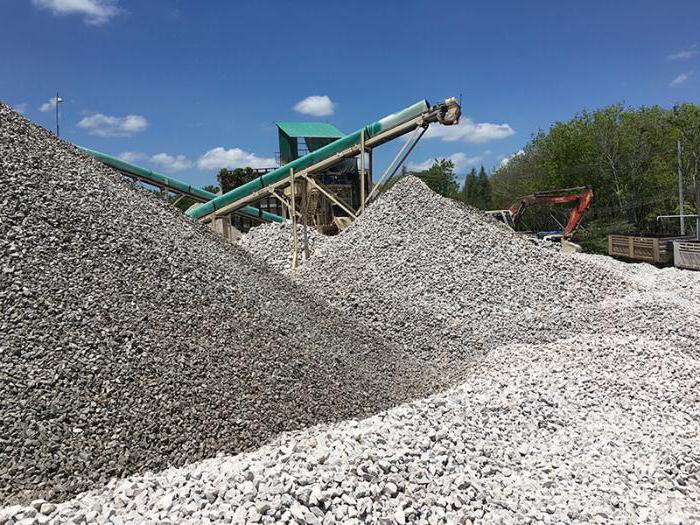What is dolomite rubble. Its fractions and application
In the construction industry, a hugethe number of all kinds of materials, one of which is dolomite rubble. This substance has a huge number of directions of use, starting from one of the components of construction mixtures and ending with decorative finishing.
What is dolomite crushed stone
Based on the name, you can already define the maincomponent - dolomite. It is from the sedimentary rock with this name that this crushed stone is produced. However, not all so simple. As a rule, in the same rock there is limestone in different quantities. As a result, two types of dolomite crushed rock are separated:
- Dolomitic limestone (less than 75% of dolomite).
- Limestone dolomite (more than 75% of dolomite). For this species is characterized by the presence of a large amount of calcium.
Depending on the composition of the material coloringcan vary in a very wide range, ranging from brown or yellow to gray or white. In principle, the substances are very similar to each other in most of the indicators, but there are certain properties that they do differ somewhat.
Characteristics of two types of materials:
Properties | Dolomite limestone | Limestone dolomite |
Size | Up to 120 mm | Up to 70 mm |
Amount of clay | Up to 2.2% | Up to 2% |
Strength | Up to 800 | Up to 1400 |
For the rest of their indicators, these substances are similar. Of these, radioactivity should be especially emphasized, which in both cases remains at 55 Bq / kg. This is very small, because the norm in construction is 370 Bq / kg.

Fractions
Like any other loose building material, dolomite crushed stone is divided into several fractions. That is, it can be conditionally weeded out to larger and smaller particles.
The most common options are:
- 5-20 millimeters - fine-grained rubble.
- 20-40 millimeters is a material with an average granularity.
- 40-120 millimeters is a coarse-grained substance.
Less commonly used are smaller particles (2-5millimeters). In some cases fractions of dolomite rubble of non-standard sizes, such as 3-7 millimeters, can be used. But in fact there is not much difference here. An exception may be expensive building mixtures, for which it is very important to have grains of this rubble of a strictly defined size.

Application of dolomite crushed stone
Fractions directly affect the scope of applicationof this material. The smallest grains, up to 20 millimeters in size, are used for making the widest range of concrete (again depending on the selected fraction). Among other things, it is such a small gravel that is an integral part of floors and beams, it is used for pouring floors (especially those that are oriented to installing heavy types of machines or other similar equipment).
A larger dolomite crushed stone, up to 40millimeters, finds its application when laying the foundation and can also be part of some brands of concrete mixtures. It is convenient to use for decorative backfilling of tracks or areas. Especially often the material with such grains can be found in the field of landscape design, especially if it will have a beautiful coloring. In connection with these features of use, a fraction of 20-40 millimeters is usually supplied with bags of about 50 kilograms each. Such a system allows you to purchase exactly as much as you need, and do not overpay for excess volume.
The largest crushed stone, the size of 40 millimetersand higher (rarely used grain size of more than 120 millimeters), is used for laying highways, roads in the city and so on. Rarely it is used in the manufacture of particularly large and large-scale concrete structures.

The result
Crushed stone due to its properties and separation byfactions rightly considered one of the best building materials, without which it is almost impossible to manage. Fortunately, the reserves of this substance on the planet are simply unimaginable, and therefore its cost is very low.
</ p>




